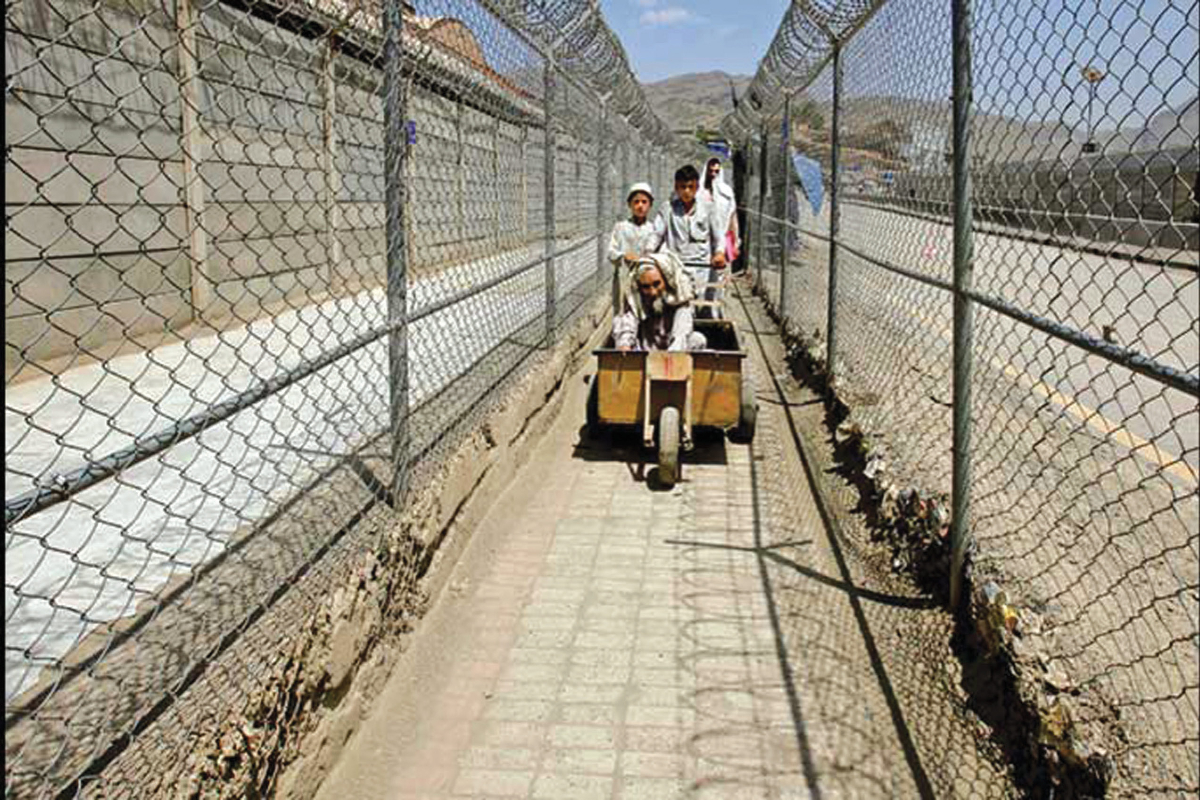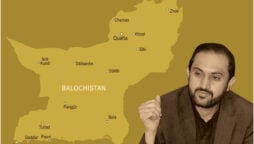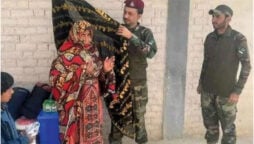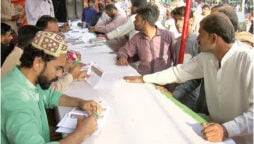
Understanding Afghanistan
The most fundamental issue for Islamabad is the continuously declining public image of Pakistan in Afghanistan
Recently, I concluded my diplomatic career with a two-year tenure as Ambassador of Pakistan to Afghanistan, witnessing momentous developments, particularly the Taliban’s retaking of the country and their march into Kabul on August 15, 2021 — exactly after two decades. This article is aimed at sharing an objective assessment about multiple dimensions of the Afghan conflict, which undoubtedly has far reaching implications for regional stability, especially for Pakistan.
For the past 50 years, internal ethnic, ideological and political differences have been exacerbated in Afghanistan by continuous foreign presence and interventions in one form or another. Whether a decade-long occupation of Afghanistan by the Soviet forces in the 1980s or the US and NATO-led intervention under the UN mandate from 2001-21 or the regional proxy struggles in the 1990s, all these have destroyed the delicate equilibrium that had evolved in Afghan political structures during the course of the past two centuries.
In the first half of 2021, when Afghan Taliban were capturing one province after another and closing in on Kabul while also engaging with the international community in Doha talks, common Afghans irrespective of the ethnic origin were willing to accept their rule provided it guaranteed peace and allowed normal conditions for their work as well as families. But after more than a year of the Taliban-led Afghan interim government, there remain doubts whether the situation has been moving towards durable stability or another phase of internal war and chaos.
The primary reason for this imbroglio is the lack of understanding, which the major powers particularly the Western countries have shown for Afghanistan, its culture and its geo-political realities. Being a multi-ethnic country, inclusivity is important for durable stability in Afghanistan. However, inclusivity historically has been the most complex and contested of the issues there and cannot be imposed from outside. When the United States and NATO had intervened in Afghanistan they did not include Taliban in the Bonne process and in the later years too remained dismissive for talks with them before it was quite late. Even during the final stages of the peace process, former President Ashraf Ghani and his close aides had the opportunities for coming up with realistic proposals for transition, but they remained intransigent. Taliban finally took over Kabul without a fight but by force and not through an intra-Afghan peace deal.
On their part, Taliban also have to be cognizant that for durable stability in Afghanistan, they have to see inclusivity not merely as a demand of the Western countries or a concession to their opposition but as a genuine need for their society. They have to realize that an exclusive Taliban regime like the current interim government is not viable in the long-term. For durable peace, it is important for the Taliban to move forward towards drawing a legal political framework or a Constitution that fulfills the governance needs as well as political aspirations of the Afghan people.
The other equally important issue is of the basic human rights and fundamental freedoms of Afghans. The Taliban have to appreciate that Afghan society has moved forward in the past two decades. Afghan families want their children – boys and girls – to get access to education and opportunities to work for both men and women while respecting cultural norms. Similarly, freedom for media and journalists is an important element of governance in the contemporary world. However, on these counts the Afghan interim government has adopted unnecessarily restrictive approaches causing suffering to their people and damaging the image of the Taliban internationally.
While there remains a criticism on the way the Taliban government is handling the issues of inclusivity and human rights, the approach adopted by the US and the Western donor countries is also not conducive for advancing efforts for durable peace and stability in Afghanistan. The Afghan foreign exchange reserves have remained frozen for more than a year and the banking transactions with Afghanistan are outlawed. This approach is severely hurting Afghan business persons to make any legal transactions for their exports and imports with the outside world, forcing them to resort to the channels of Hawala and Hundi and pushing the country to isolation. This is a violation of the basic rights of Afghans. An alternate approach of providing space to Afghanistan for normal economic interaction with the world would have left the international community with a better chance for persuading the Taliban towards inclusivity and a rights-based framework.
All analysts and observers of the Afghan situation agree that under the Taliban rule security and law and order situation has significantly improved. As a matter of fact, for the first time since the late 1970s, all parts of Afghanistan have become accessible to public and international humanitarian organisations. The number of people losing lives during the one year of Taliban government is much lower than the corresponding figures in the past many years, though it can also be argued that one main source of casualties in those years was Taliban insurgency itself. The people in the rural areas have especially taken a sigh of relief at the end of night raids and the searches for their homes and families that for two decades remained a major source of public resentment against foreign forces.
Terrorism remains a key threat which could derail the current period of relative peace in Afghanistan. Global terrorist groups such as Daesh and resurgent Al-Qaeda and regional terrorist groups like TTP, ETIM and IMU are present in various pockets in Afghanistan. Daesh has been carrying out regular attacks selectively targeting Shia and Hazara communities, damaging the stability of the Taliban regime. The Taliban have shown firm resolve in curbing Daesh fighters and activities in several Afghan provinces, but they have been lacking in tackling regional terrorist groups such as TTP, ETIM and IMU. This is partly because of ideological connections and camaraderie with these groups during the years of the Taliban insurgency in previous years and partly to avoid disgruntled fighters from these groups joining hands with Daesh.
The political opponents of the Taliban are visible at three levels. Firstly, there are leaders like former President Hamid Karzai, former Chief Executive and Chair of High Council for National Reconciliation Dr. Abdullah Abdullah and leader of Hizb-e-Islami Gulbuddin Hekmatyar, who chose to stay in Afghanistan and raise their political voice. Many Afghan political leaders are residing in exile in other countries including Iran, Tajikistan, Turkey and Pakistan. Apart from political opposition, a National Resistance Front (NRF) is trying to wage an armed struggle, while also keeping doors for political talks open. So far apart from sporadic troubles in Panjshir or a couple of Northern provinces, the armed struggle has not shown any significant impact on the Taliban’s control of Afghanistan.
Instead, internal divisions among the Taliban leaders can be a bigger challenge. Although Taliban as an organisation have maintained unity, differences in some key areas such as girls’ education, distribution of cabinet and administration portfolios and moderation on political and governance issues has also led to speculations about aggravating internal fissures. There remain reports about struggle for influence between strongmen like Sirajuddin Haqqani, Mullah Yaqoob, Mullah Bradar and several others, although it is difficult to comment on the intensity and dynamics of these differences. Many believe that chain of command and internal coherence has deteriorated since the days of the first Taliban rule under Mullah Omer.
Regional diplomacy has once again failed to deliver on peace and stability in Afghanistan. The three Conferences of neighbours and regional countries hosted by Pakistan, Iran and China could not craft a consensus on even partial forward movement on the course to recognition of the Afghan interim government. This is as much due to hardline taken by the Taliban on issues like girls’ education and inclusivity as much it is because of divergent perspectives and interests among the neighbours and the regional countries relating to Afghanistan. The shifting of international attention on other disputes such as Ukraine and donor fatigue have also gradually distracted international attention from the Afghan situation.
These developments indicate that the current stalemate in Afghanistan may continue for some time and could even prolong. The common ground for ending Afghanistan’s isolation and the recognition of the Taliban government doesn’t seem to be in sight. Consequently, Afghans facing economic and social hardship continue to explore avenues for leaving the country. According to informal estimates around two million Afghans have left Afghanistan since 15 August 2021. This is causing hardening of border controls by neighbours and asylum procedures by Western and European countries. Experience has shown that such conditions provide ideal breeding ground for terrorism and violence.
The way the situation in Afghanistan has evolved since the Taliban take-over, it has not only defied Islamabad’s expectations but it entails serious implications for Pakistan. The cross-border security and terrorism situation has not improved as per Pakistan’s expectation. Conversely, an increase in the terrorist activity by TTP fighters from their bases in Afghanistan into Pakistan during past one year is a matter of serious concern. While the two sides have established institutional channels to deal with the cross-border security issues, the results have not been so impressive. The dialogue that the Pakistan government started with the TTP through the good offices of the Afghan Taliban has also remained fruitless. Absence of a common understanding between Pakistan and the Afghan interim government regarding addressing TTP challenge doesn’t augur well for Pakistan.
Bilateral interaction with the Taliban regime is also facing stagnation. Taliban’s expectations such as recognition and allowing free movement of people from the borders are difficult to be met by Pakistan in the current geo-political realities. As a result, the momentum in exchange of visits between leaders and an institutional strategic dialogue is lacking.
Trade with Pakistan has generally shown improvement. However, in view of continuing economic sanctions and banking restrictions from the international financial institutions, any meaningful progress on regional connectivity and mega-projects such as TAPI, CASA-1000, trans-Afghan railways and regional trade and transit agreements is not practically possible.
In my view, the most fundamental issue for Islamabad is the continuously declining public image of Pakistan in Afghanistan. Pakistan and Afghanistan are two brotherly neighbouring countries with a long border and close religious, cultural and people to people bonds. It’s also true that in the past two decades there have been investments and organised efforts for defaming Pakistan in Afghanistan, but continuously increasing resentment among Afghans about Pakistan even under the Taliban-controlled government requires introspection. It is important that Pakistan and its policy makers seriously take into cognizance the deepening negative perceptions about Pakistan in Afghanistan and take measures for dispelling impressions in the Afghan minds about Islamabad’s alleged interference in Afghanistan.
I would like to conclude this piece with the observation that for almost half a century Pakistan-Afghanistan relations have been shaped by military dynamics of the Afghan conflict. Consequently, natural softer dimensions of the relationship particularly socio-economic exchanges and people to people interaction have suffered in a drastic way. End of foreign presence after withdrawal of the US and NATO forces from Afghanistan calls for policies to shift the balance from security-oriented mindset to economic integration and connectivity between the peoples of the two countries, and with the region. Such an approach is vital for harnessing the potential of fraternal relations between the two countries.
The writer is a former ambassador of Pakistan to Afghanistan
Catch all the National Nerve News, Breaking News Event and Latest News Updates on The BOL News
Download The BOL News App to get the Daily News Update & Live News.












 Read the complete story text.
Read the complete story text. Listen to audio of the story.
Listen to audio of the story.